Rapid Excavation and Stability Control of Deep Roadways for an Underground Coal Mine with High Production in Inner Mongolia
Abstract
:1. Introduction
2. Engineering Geological Conditions
3. Support System Design
3.1. Principles for a Support System Allowing for Rapid Excavation
- (1)
- Simultaneous excavation and bolt installation. In RA 21204, excavation and bolt installation are carried out using the MB670 bolter miner, which is manufactured by Sandvik Mining and Construction G.m.b.H (Figure 6). When the bolter miner cuts coal, bolts can be installed simultaneously by the roof bolter and the sidewall bolter, preventing initial deformation of the roadway and failure of rock mass. This can maintain the integrity of the rock mass in the roof and improve excavation speed.
- (2)
- Long flexible bolts. The previous bolt and cable support system was complicated to install and took more than 60% of the excavation time, which limited excavation speed. Bolts limited deformation in their anchorage zones, but the thickness of the anchorage zones was limited and was unable to prevent roof sag. Cables were insufficiently pretensioned to provide effective reinforcement, and hung loosely in anchorage zones. However, a support system employing long flexible bolts can form a thicker anchorage zone and prevent roof sag. Furthermore, it is simpler to install than the previous system and can lead to improved excavation speed.
- (3)
- High pretension bolting. Active support from long flexible bolts that are pretensioned to high levels can fasten thin layers of roof strata together to form thick reinforced anchorage zones [25]. The level of pretension also determines the speed at which the axial load on the bolt increases. This speed reflects the sensitivity of the bolt to stress changes in the rock mass. Pretension levels also determine the ultimate strength of the bolt [26]. With a higher level of pretension, the bolt is more sensitive to stress changes in the rock mass. It responds more actively, and the axial load increases more rapidly. When slight deformations appear in the rock mass, the strength of a bolt that is pretensioned to high levels increases rapidly. Therefore, the high strength of long flexible bolts could effectively control the delamination of roof strata, which ensures protection from roof collapse. As a result, to provide effective reinforcement to the roof and control the delamination of roof strata, bolts should be pretensioned to high levels.
- (4)
- Large spacing among bolts. In the previous support system, bolts were placed less than 1000 mm apart, considerably limiting excavation speed. Increasing the spacing is critical to achieving high excavation speeds.
3.2. New Support System
- (1)
- The roof was supported by four long flexible bolts, each 21.8 mm in diameter and 4000 mm in length, combined with a reinforced steel mesh that was 5400 mm long and 1600 mm wide. The mesh was made of welded steel bars of 6.5 mm in diameter. Flexible bolts were made of high-strength steel rope strands with a yield strength of 1600 MPa. Each bolt comprised 19 strands and was installed in the roof with a resin capsule of 23 mm in diameter and 700 mm in length. Two types of resin—an SF-type (super-fast anchoring agent) and an MF-type (medium-fast anchoring agent)—were used. To provide effective reinforcement, bolts were pretensioned to 200 kN and installed perpendicularly to the roof surface. The four bolts were installed 1057, 1986, and 1057 mm apart because the roof bolter was not designed to make sideways motion (Figure 6).
- (2)
- The sidewall that was mined was supported with fiberglass-reinforced plastic bolts, each 27 mm in diameter and 2000 mm in length, combined with a plastic mesh that was 5400 mm long and 3200 mm wide. The pretensioned torque was 100 N·m or above. The other sidewall was reinforced by threaded steel bolts, each 20 mm in diameter and 2200 mm in length, combined with a diamond-shaped metal mesh that was 5400 mm long and 3200 mm wide. The corresponding torque was greater than 150 N·m.
4. Monitoring and Measurement Methods
4.1. Axial Load Measurements
4.2. Displacement Measurements
4.3. Monitoring of Fracture Development
4.4. Locations of the Field Monitoring Stations
5. Results and Discussion
5.1. Monitoring of Axial Load on Flexible Bolts
5.2. Displacements of the Roadway
5.3. Fracture Development in the Surrounding Rock Mass of the Roof
6. Conclusions
- (1)
- In situ stress measurements indicated that high stress was one of the main factors of roadway instability. The previous support system employed short bolts and cables, which were insufficient to achieve synergetic effects. This resulted in roadway instability and failure, which prevented rapid excavation.
- (2)
- Compared with the previous support system of short bolts and cables, the new support system consisting of long flexible bolts pretensioned to high levels and spaced at large intervals was simpler to install, required fewer bolts, and resulted in higher excavation speed. Using the new system, a maximum excavation speed of up to 31.5 m/day was achieved. This represented an 85.3% increase compared with the maximum excavation speed achieved under the previous support system (17 m/day).
- (3)
- The new support system formed a thick reinforced anchorage zone, which greatly improved the bearing capacity of the roof. Field measurements indicated that the new system effectively controlled deformation and fracture development of the surrounding rock during excavation and mining. Maximum displacements of the roof during excavation and mining were 10 and 30 mm, respectively. During mining, fissures propagated up to only a depth of 1.4 m into the surrounding rock mass of the roof.
- (4)
- The axial load on the flexible bolts was used as an important index to predict and monitor the safety level of the roof. The level of pretension on the bolts determines the sensitivity of the bolt to stress changes in the rock mass and is reflected by the speed at which axial loads on the bolts increase. Pretension levels also determine the ultimate strength of the bolt. According to field measurements, the evolution of axial loads can be divided into the surge, stable, and fluctuation stages. Axial loads experienced a sharp upward trend during the surge stage as a result of slight deformations caused by excavation operations. This active response of the bolts is beneficial to the prevention of large deformations and failure of the roof during excavation and mining.
Acknowledgments
Author Contributions
Conflicts of Interest
References
- Peng, S.; Zhang, B.; Wang, T. China’s coal resources: Octothorpe shaped distribution characteristics and sustainable development strategies. Eng. Sci. 2015, 17, 29–35. [Google Scholar]
- Qian, D.; Zhang, N.; Pan, D.; Xie, Z.; Shimada, H.; Wang, Y.; Zhang, C.; Zhang, N. Stability of deep underground openings through large fault zones in argillaceous rock. Sustainability 2017, 9, 2153. [Google Scholar] [CrossRef]
- Xu, Z.; Gao, S.; Cui, S.; Sun, Y.; Chen, Z. Hydro-geological basic and practice for water-preserved mining in ecologically vulnerable area: A case study in Hami coalfield. J. China Coal Soc. 2017, 42, 80–87. [Google Scholar]
- Kang, H.P. Support technologies for deep and complex roadways in underground coal mines: A review. Int. J. Coal Sci. Technol. 2014, 1, 261–277. [Google Scholar] [CrossRef]
- Kang, H.P. Sixty years development and prospects of rock bolting technology for underground coal mine roadway in China. J. China Univ. Min. Technol. 2016, 45, 1071–1081. [Google Scholar]
- Wang, X. Current situation of rapid excavation technology and equipment in coal mine roadway in China. Coal Mine Mach. 2017, 38, 1–3. [Google Scholar]
- Wang, Y.; Shan, R.; Cai, W. Factor analysis on factors influencing on driving speed of coal roadway in Xishan mining area. J. China Coal Soc. 2011, 36, 925–929. [Google Scholar]
- Çopur, H.; Tunçdemir, H.; Bilgin, N.T.; Dinçer, T. Specific energy as a criterion for the use of rapid excavation systems in Turkish mines. Trans. Inst. Min. Metall. 2013, 110, 149–157. [Google Scholar] [CrossRef]
- Nnaurato, N.; Mancini, R.; Rondena, E.; Zaninetti, A. Forecasting and effective TBM performances in a rapid excavation of a tunnel in Italy. In Proceedings of the 7th ISRM Congress, Aachen, Germany, 16–20 September 1991. [Google Scholar]
- Jiang, Y.S.; Chen, L.H.; Ju-Gen, F.U. Discussion on organization optimization of roadway rapid excavation in second construction period of mine. J. Anhui Univ. Sci. Technol. 2011, 81, 553–557. [Google Scholar]
- Zhang, D. Development and application on rapid driving system. Coal Sci. Technol. 2015, 43, 96–99. [Google Scholar]
- Hu, S.T.; Nie, B.S.; Liu, M.J.; Liu, Y.W.; Li, X.C.; Guo, J.H. Research on rapid excavation technology of roadway in coal seam with the risk of coal and gas outburst. Adv. Mater. Res. 2012, 524–527, 325–329. [Google Scholar] [CrossRef]
- Mishra, A.K.; Sen, A.; Sain, D. Innovative developments in drilling and blasting techniques for rapid excavation of drivages in mines. J. Mines Met. Fuels 2013, 61, 194–201. [Google Scholar]
- Wang, Z. Bolter Miner Quick Tunneling Technology and Process in High Gas Thick Coal Seam. Master’s Thesis, China University of Mining and Technology, Xuzhou, China, 2014. [Google Scholar]
- Yuan, W.H. Rapid excavation technology by drilling and blasting and its application in hard rock roadway. In Proceedings of the International Conference on Multimedia Technology, Hangzhou, China, 26–28 July 2011. [Google Scholar]
- Yang, R.S.; Cao, W.J.; Liu, G.Q.; Bai, X.S.; Guo, D.M. Rapid excavation research of half coal rock lane in Liu-wan mine. Appl. Mech. Mater. 2012, 170–173, 418–423. [Google Scholar] [CrossRef]
- Goel, R.K.; Jethwa, J.L.; Paithankar, A.G. Tunnelling through the young Himalayas—A case history of the Maneri-Uttarkashi power tunnel. Eng. Geol. 1995, 39, 31–44. [Google Scholar] [CrossRef]
- Zhang, M.; Shimada, H.; Sasaoka, T.; Matsui, K.; Dou, L. Evolution and effect of the stress concentration and rock failure in the deep multi-seam coal mining. Environ. Earth Sci. 2014, 72, 629–643. [Google Scholar] [CrossRef]
- Seedsman, R. The stress and failure paths followed by coal mine roofs during longwall extraction and implications to tailgate support. In Proceedings of the 20th International Conference on Ground Control in Mining, Morgantown, WV, USA, 7–9 August 2001. [Google Scholar]
- Li, H.; Lin, B.; Hong, Y.; Gao, Y.; Yang, W.; Liu, T. Effects of in-situ stress on the stability of a roadway excavated through a coal seam. Int. J. Min. Sci. Technol. 2017, 27, 917–927. [Google Scholar] [CrossRef]
- Yang, S.Q.; Chen, M.; Jing, H.W.; Chen, K.F.; Meng, B. A case study on large deformation failure mechanism of deep soft rock roadway in Xin’An coal mine. Eng. Geol. 2016, 217, 89–101. [Google Scholar] [CrossRef]
- Li, C.; Wang, Z.; Liu, T. Principle and practice of coupling support of double yielding shell of soft rock roadway under high stress. Int. J. Min. Sci. Technol. 2014, 24, 513–518. [Google Scholar] [CrossRef]
- Ding, X.; Weng, Y.; Zhang, Y.; Wang, T.; Rao, Z. Stability of large parallel tunnels excavated in weak rocks: A case study. Rock Mech. Rock Eng. 2017, 50, 2443–2464. [Google Scholar] [CrossRef]
- Shen, B.; King, A.; Guo, H. Displacement, stress and seismicity in roadway roofs during mining-induced failure. Int. J. Rock Mech. Min. Sci. 2008, 45, 672–688. [Google Scholar] [CrossRef]
- Shen, B.T. Coal mine roadway stability in soft rock: A case study. Rock Mech. Rock Eng. 2014, 47, 2225–2238. [Google Scholar] [CrossRef]
- Qian, D.; Zhang, N.; Shimada, H.; Wang, C.; Sasaoka, T.; Zhang, N. Stability of goaf-side entry driving in 800-m-deep island longwall coal face in underground coal mine. Arab. J. Geosci. 2016, 9, 1–28. [Google Scholar] [CrossRef]

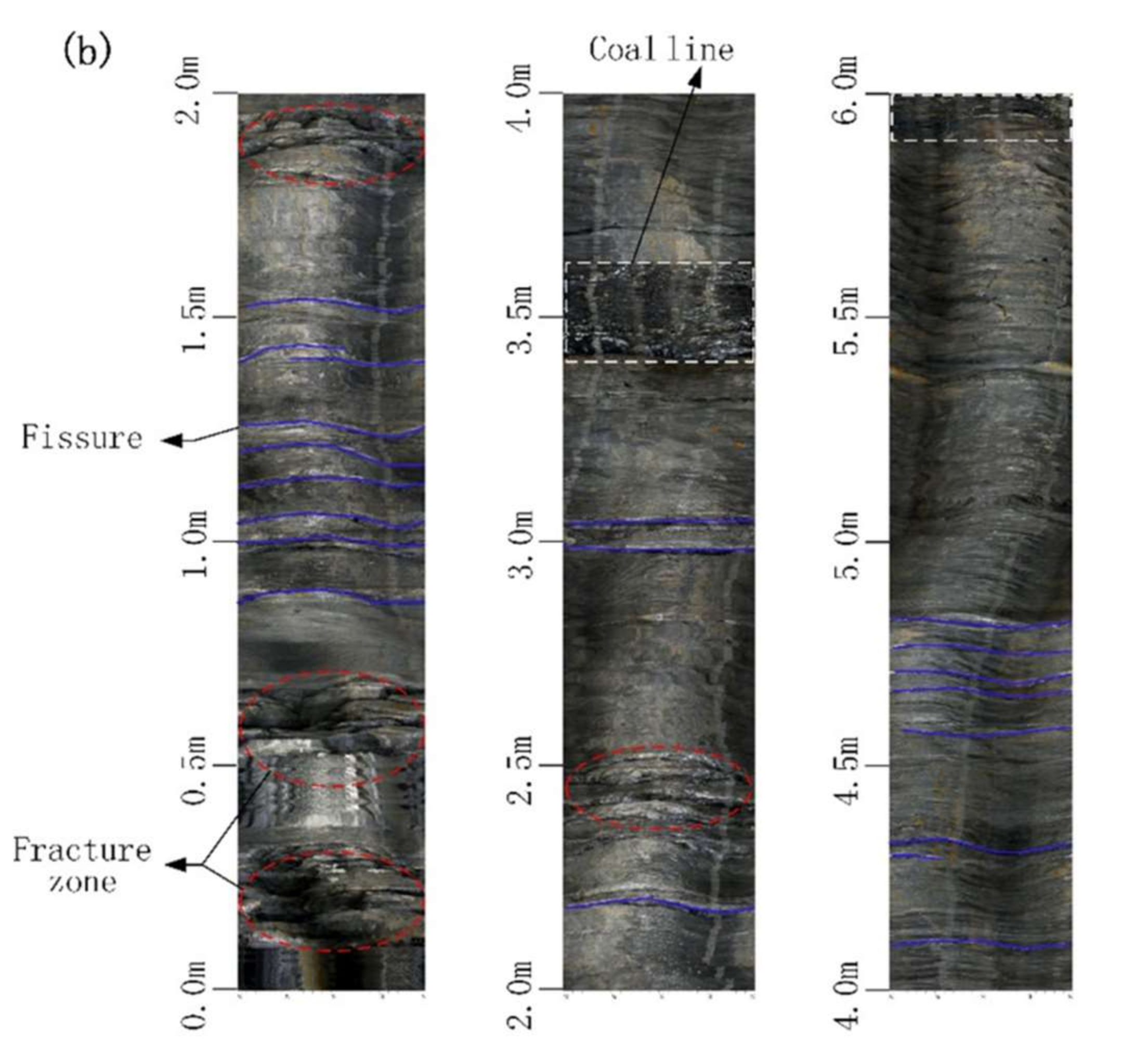
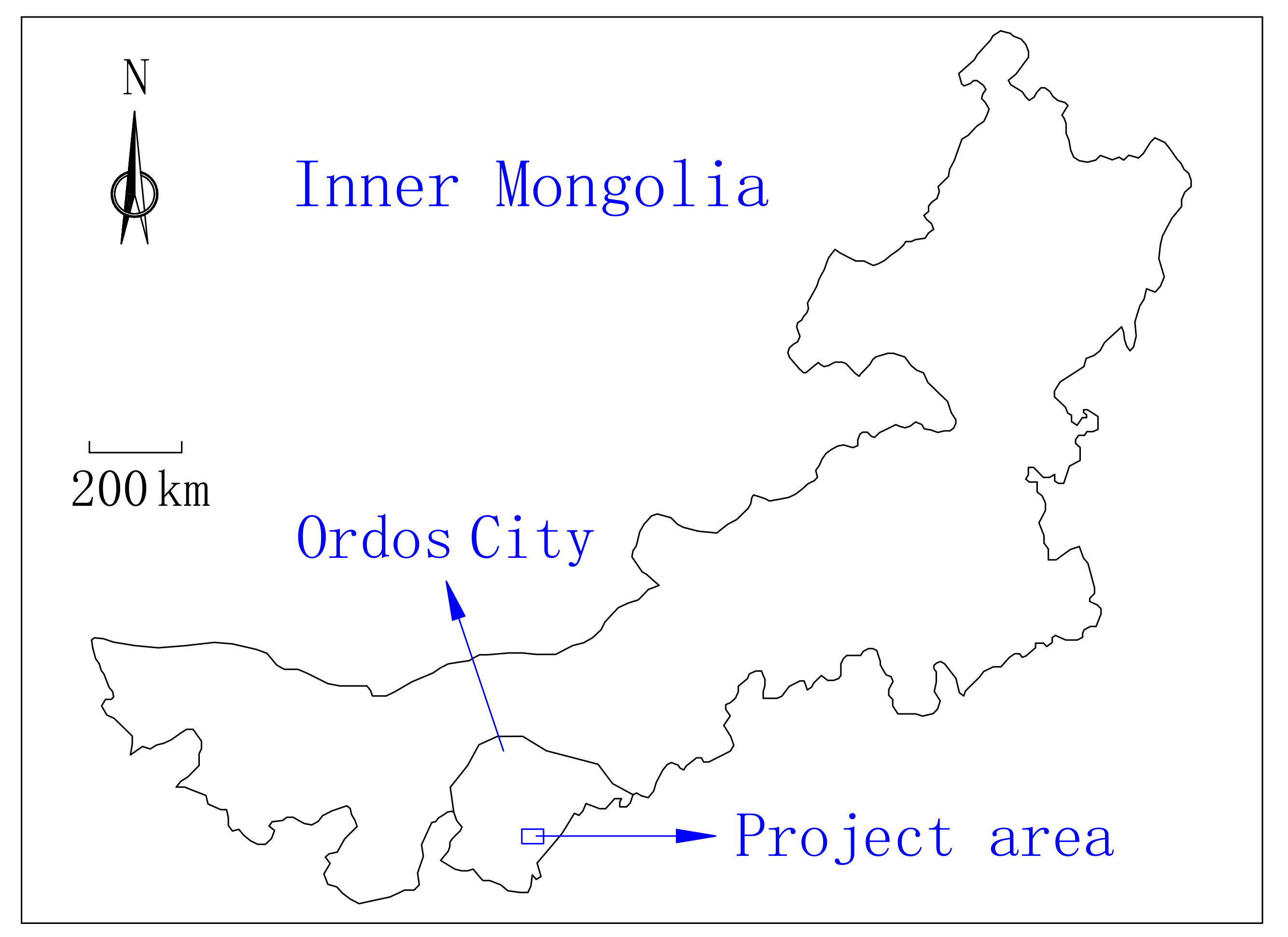
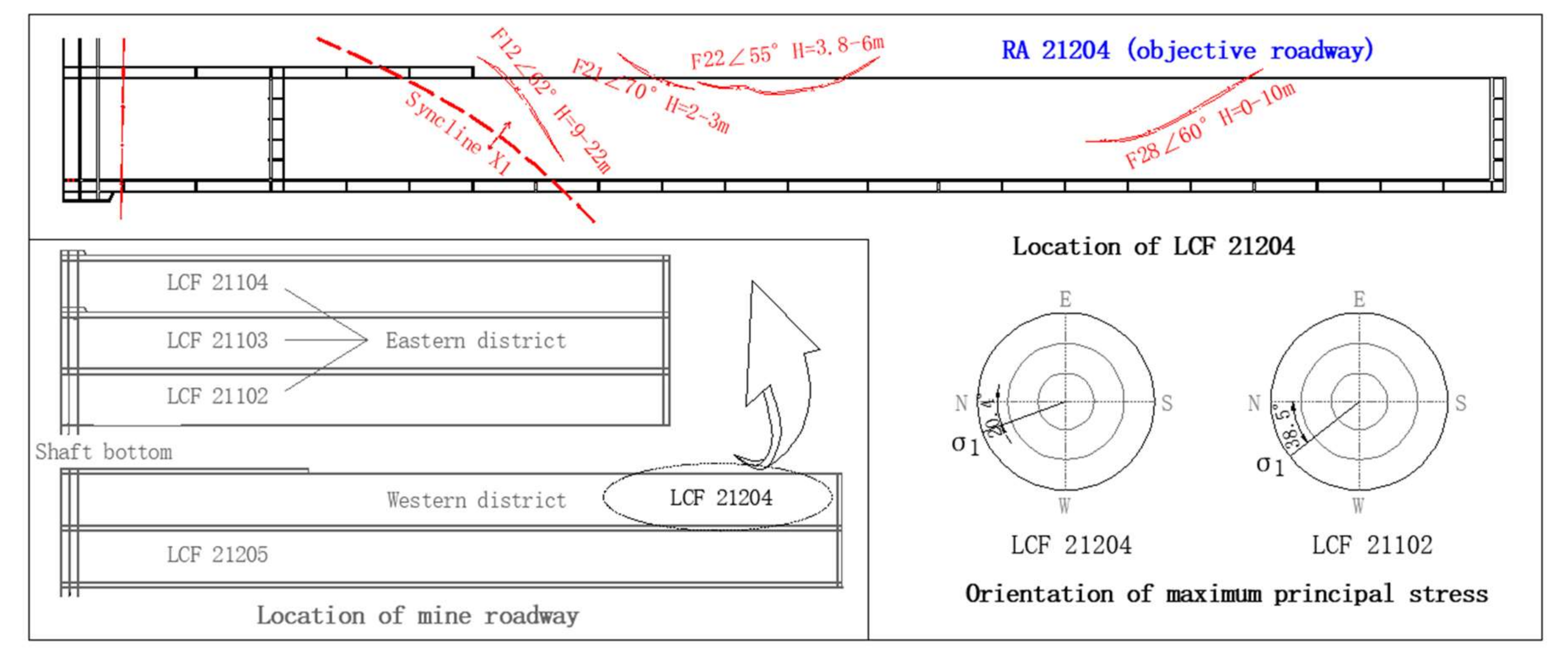



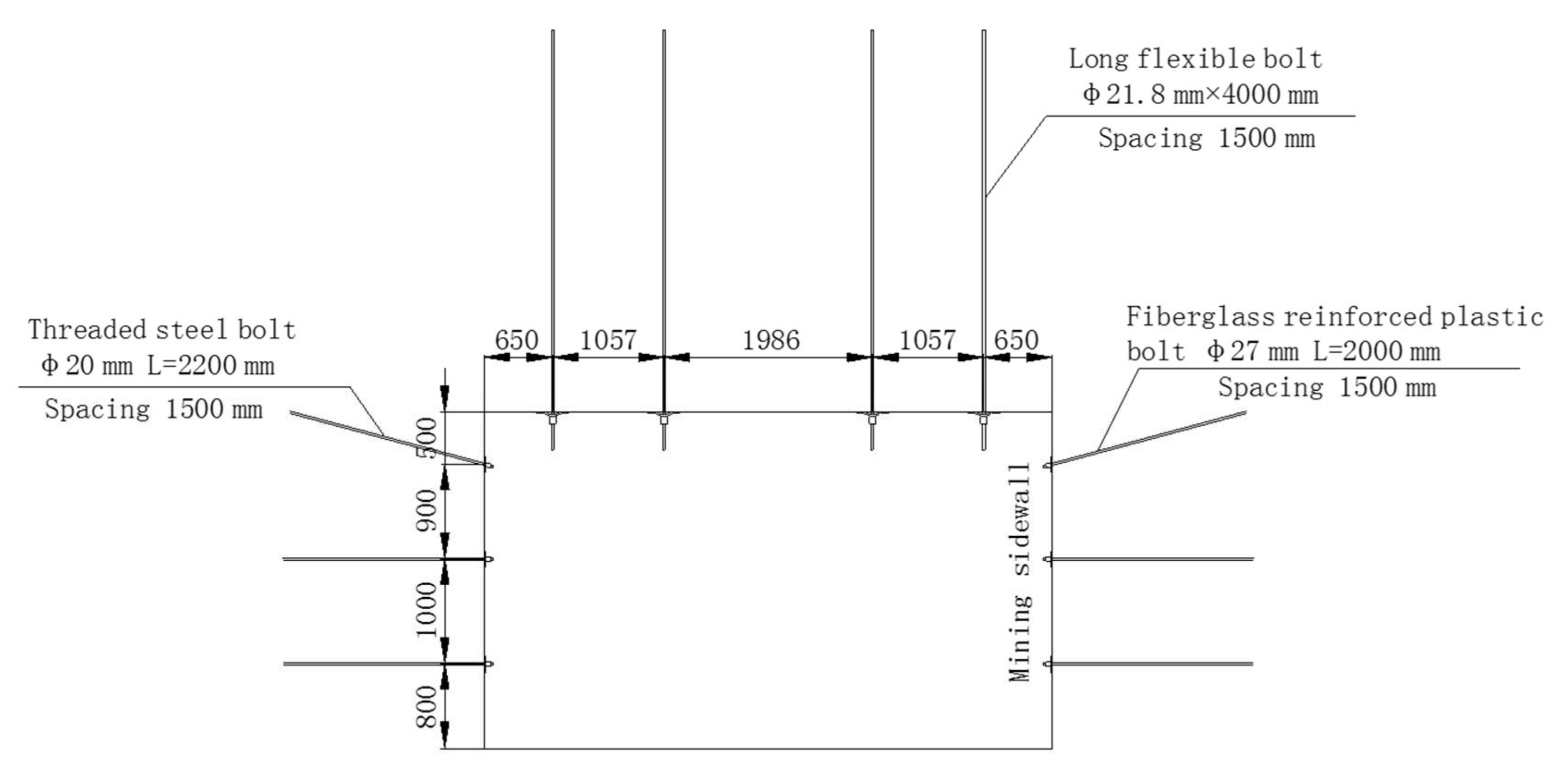
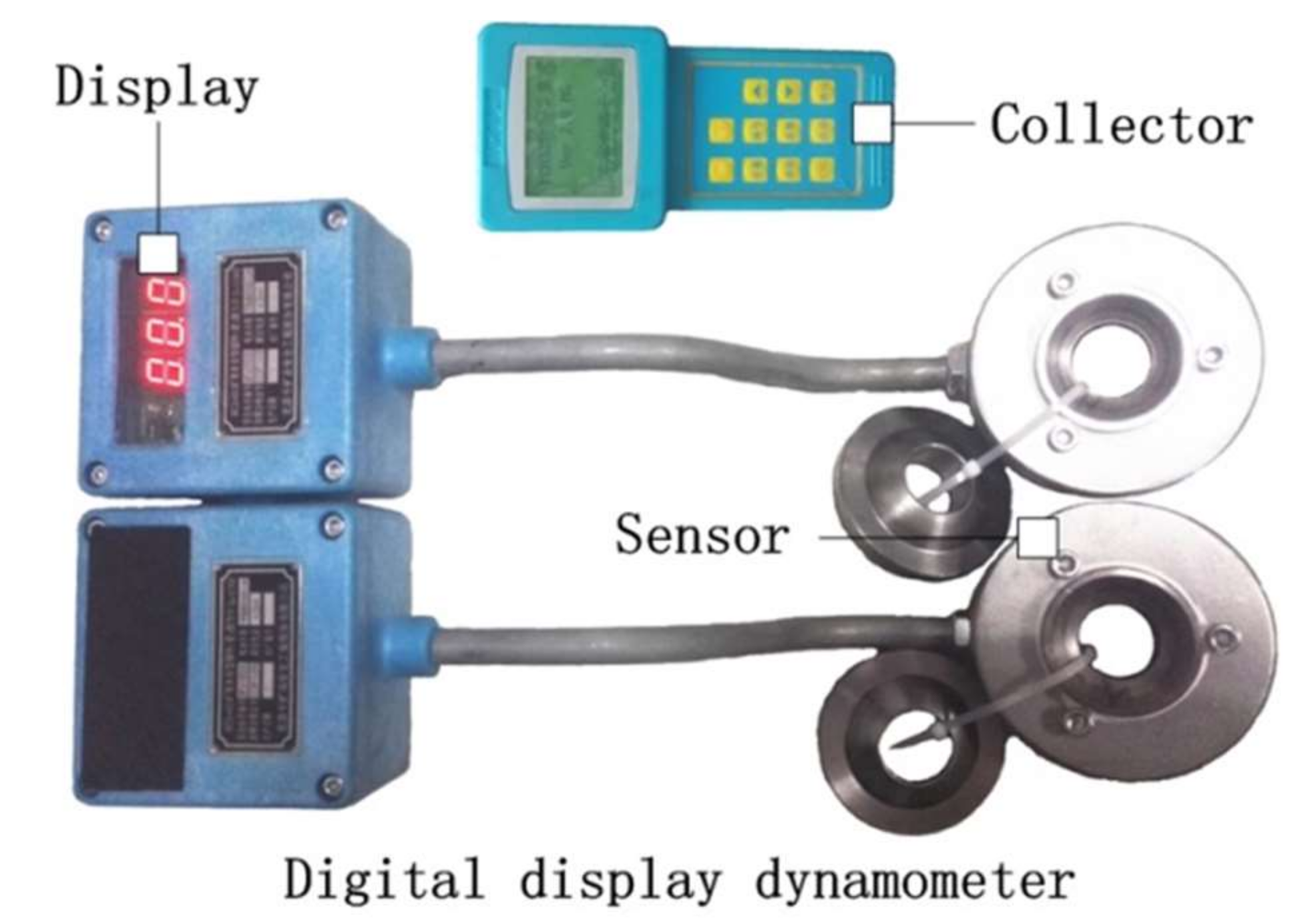

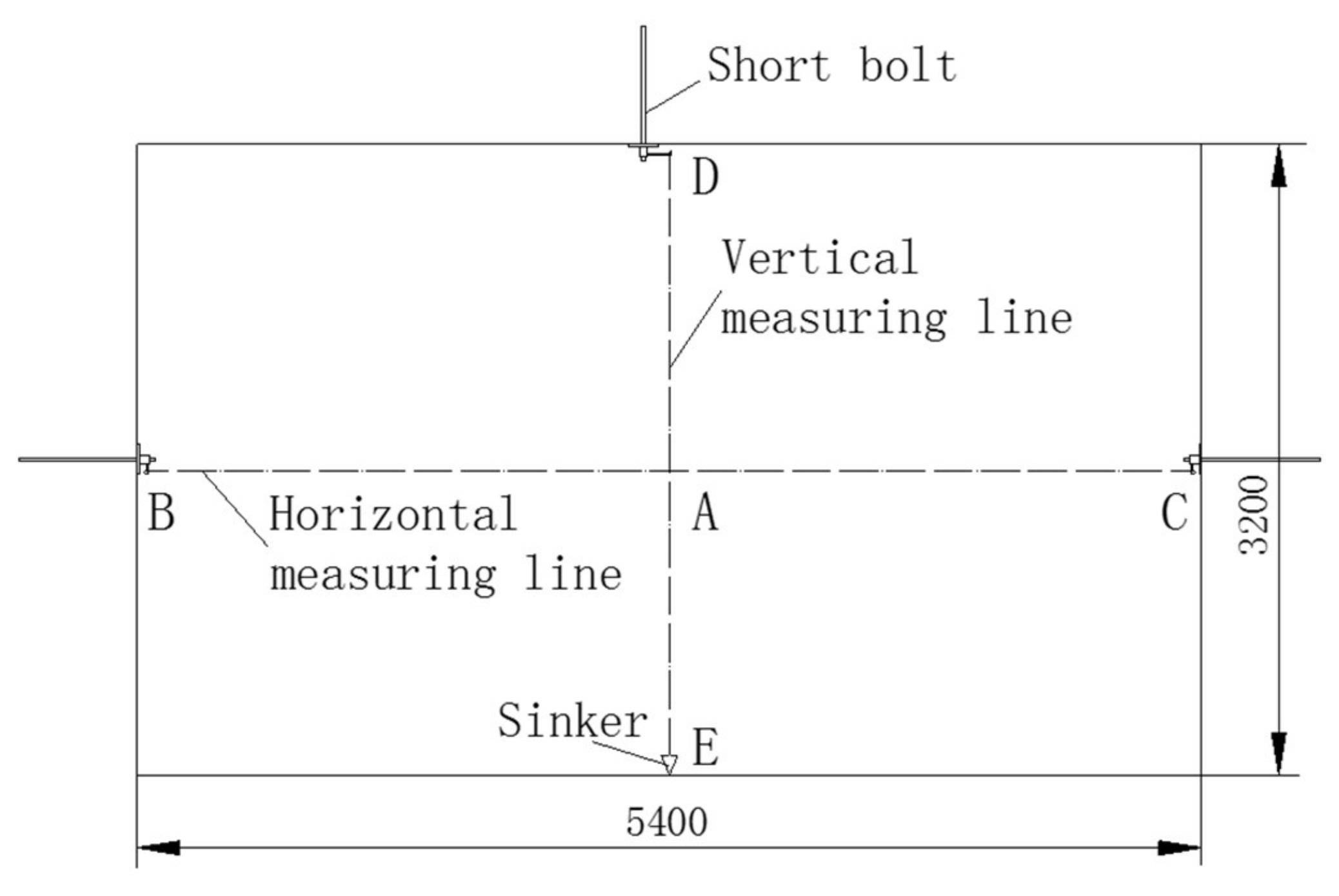





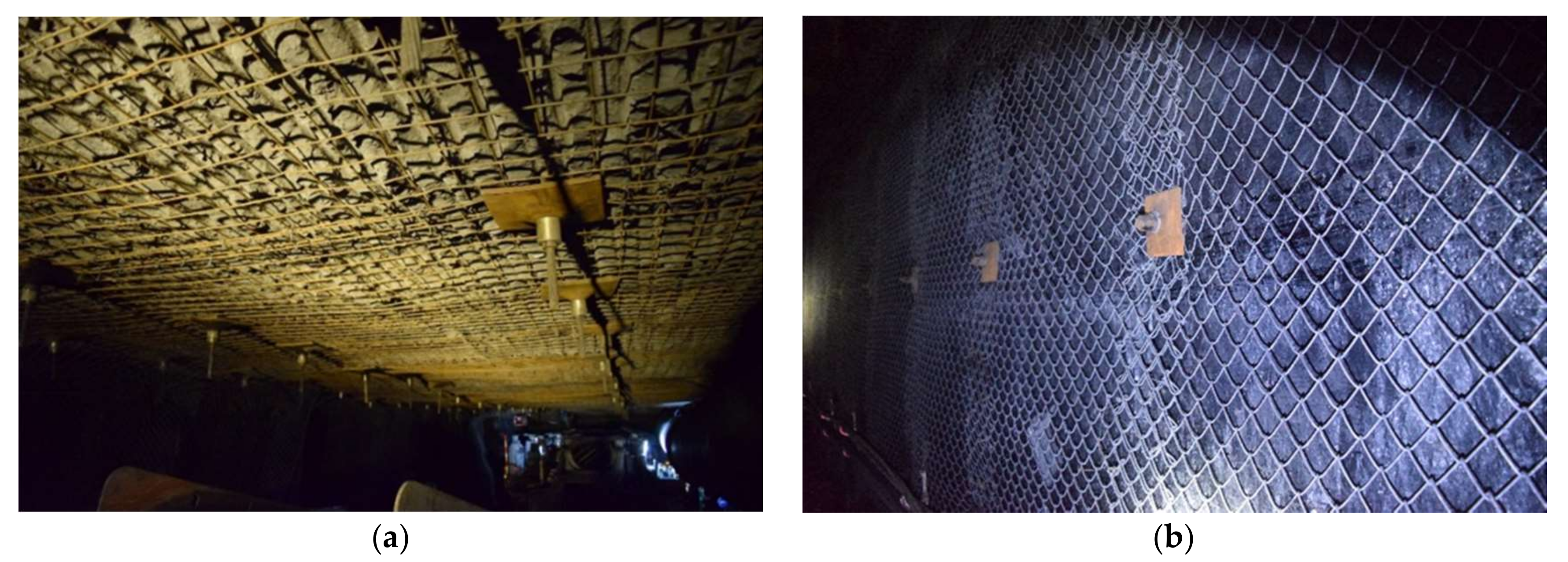

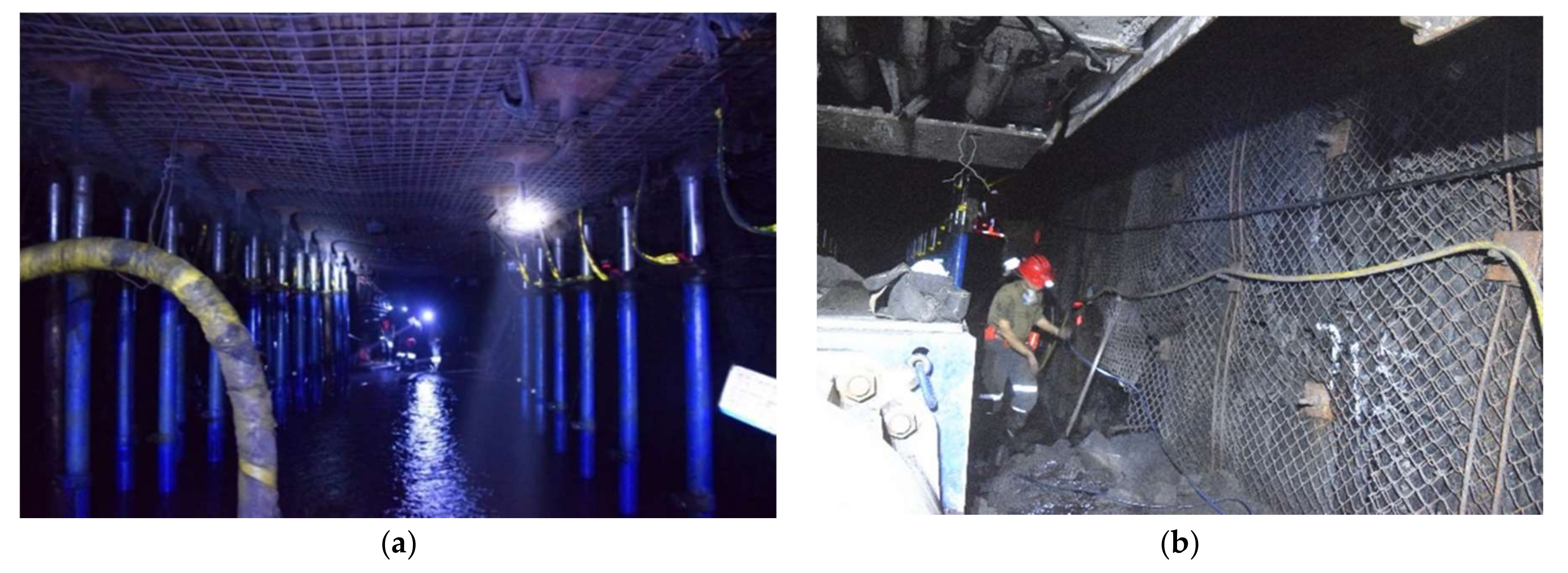
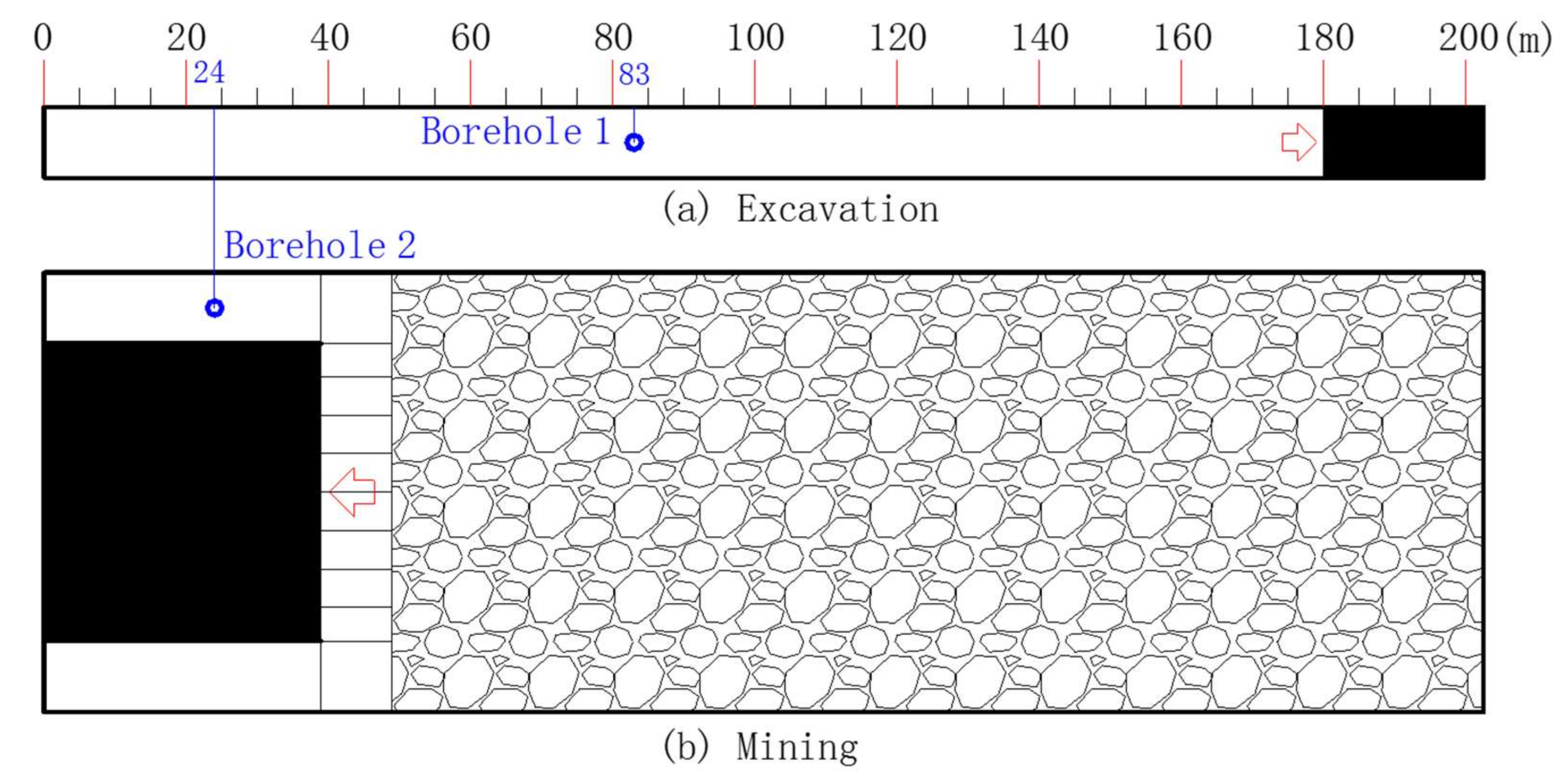

| Experiment Site | Stress (MPa) | Azimuth Angle (°) | ||
|---|---|---|---|---|
| σH | σh | σv | ||
| LCF 21204 | 22.33 | 11.41 | 15.35 | 20.4 |
| LCF 21102 | 18.52 | 9.39 | 15.49 | 38.5 |
| Distance Difference | BC | AB | AC | DE | AD | AE |
|---|---|---|---|---|---|---|
| Displacement | Sidewall-to-sidewall | Left sidewall | Right sidewall | Roof-to-floor | Roof | Floor |
| Station | Axial Load of the Flexible Bolts | Surface Displacement | Fracture Development of the Surrounding Rock |
|---|---|---|---|
| Excavation | CL1, CL2, CL3 | D1 | B1 |
| Mining | CL1, CL2, CL3 | D2 | B2 |
| Time/h | 20 | 98 | 1830 |
|---|---|---|---|
| Distance to the excavation face/m | 30 | 125 | / |
| Distance to the LCF 21204/m | / | / | 108 |
| Time/h | 50 | 160 | 1600 | 1880 |
|---|---|---|---|---|
| Distance of CL2 to the excavation face/m | 56.5 | 157.5 | / | / |
| Distance of CL3 to the excavation face/m | 55 | 156 | / | / |
| Distance of CL2 to the LCF 21204/m | / | / | 101 | 43 |
| Distance of CL3 to the LCF 21204/m | / | / | 102.5 | 44.5 |
© 2018 by the authors. Licensee MDPI, Basel, Switzerland. This article is an open access article distributed under the terms and conditions of the Creative Commons Attribution (CC BY) license (http://creativecommons.org/licenses/by/4.0/).
Share and Cite
Xie, Z.; Zhang, N.; Qian, D.; Han, C.; An, Y.; Wang, Y. Rapid Excavation and Stability Control of Deep Roadways for an Underground Coal Mine with High Production in Inner Mongolia. Sustainability 2018, 10, 1160. https://doi.org/10.3390/su10041160
Xie Z, Zhang N, Qian D, Han C, An Y, Wang Y. Rapid Excavation and Stability Control of Deep Roadways for an Underground Coal Mine with High Production in Inner Mongolia. Sustainability. 2018; 10(4):1160. https://doi.org/10.3390/su10041160
Chicago/Turabian StyleXie, Zhengzheng, Nong Zhang, Deyu Qian, Changliang Han, Yanpei An, and Yang Wang. 2018. "Rapid Excavation and Stability Control of Deep Roadways for an Underground Coal Mine with High Production in Inner Mongolia" Sustainability 10, no. 4: 1160. https://doi.org/10.3390/su10041160
APA StyleXie, Z., Zhang, N., Qian, D., Han, C., An, Y., & Wang, Y. (2018). Rapid Excavation and Stability Control of Deep Roadways for an Underground Coal Mine with High Production in Inner Mongolia. Sustainability, 10(4), 1160. https://doi.org/10.3390/su10041160






